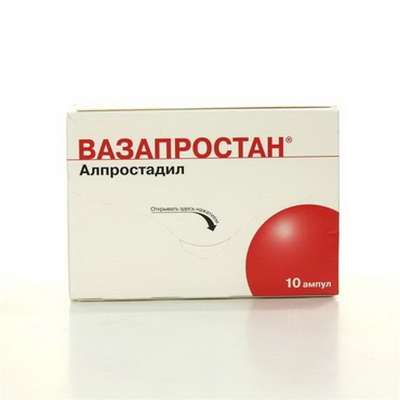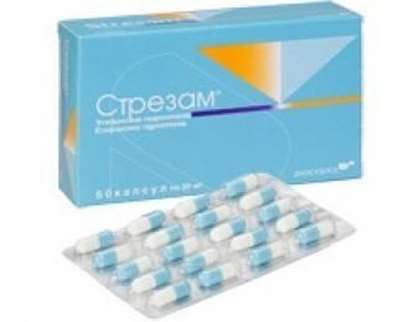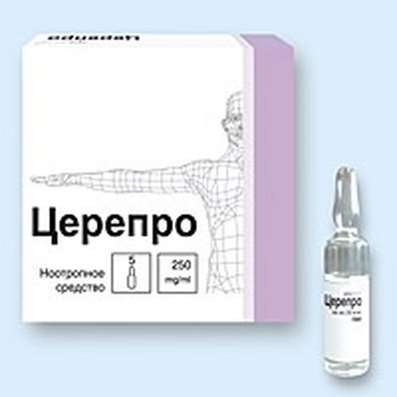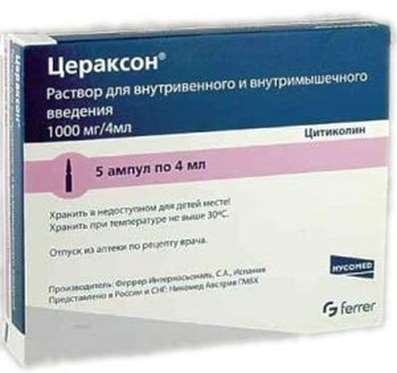Instruction for use: Clobetasol (Clobetazolum)
I want this, give me price
Pharmacological group
Glucocorticosteroids
Nosological classification (ICD-10)
L30.9 Dermatitis, unspecified
Allergic dermatoses complicated by a secondary bacterial infection, Anal eczema, Bacterial maturation, Varicose Eczema, Venous dermatitis, Inflammation of the skin, Inflammation of the skin upon contact with plants, Inflammatory Skin Diseases, Inflammatory skin reactions, Inflammatory processes of the skin, Hypostatic dermatitis, Fungal Eczema, Fungal dermatosis, Dermatitis, Dermatitis is stagnant, Dermatitis and eczema in the anal area, Dermatitis acute contact, Perianal dermatitis, Dermatosis, Dermatosis of the scalp, Dermatosis of psoriasis, Dermatosis with persistent itching, Dermatoses, Dermatoses itchy, Other itching dermatoses, Significant eczematous manifestations, Itching with, dermatoses, Itching eczema, True eczema, Skin reaction to insect bites,Skin itching with dermatosis, Constitutional eczema, Weeping eczema, Drowsing inflammatory skin disease, Dying Infectious-Inflammatory Skin Disease, Non-allergic dermatitis, Nummular eczema, Acute contact eczema, Acute inflammatory skin disease, Acute dermatosis, Acute severe dermatosis, Perianal dermatitis, Superficial dermatosis, Subacute Contact Eczema, Simple dermatitis, Occupational dermatitis, Psychogenic dermatosis, Bubble dermatitis of newborns, Pustular eruptions, Irritation and redness of the skin, Low-flammable eczema, Dry atrophic eczema, Dry eczema, Toxic dermatitis, Ear eczema like dermatitis, Chronic eczema, Chronic dermatosis, Chronic common dermatosis, Scaly papular dermatosis, Eczema, Eczema anal region, Eczema of the hands, Eczema Contact, Eczema lichenized, Eczema Nummular, Eczema acute, Eczema acute contact, Eczema subacute, Eczematous dermatitis, Eczema-like rashes, Ecome exogenous, Endogenous eczema, Gluteal dermatitis, Restricted itchy dermatitis
L40 Psoriasis
Chronic psoriasis with diffuse plaques, Generalized psoriasis, Psoriasis of the scalp, Psoriasis of the scalp, Generalized form of psoriasis, Psoriasis dermatitis, Psoriasis complicated by erythroderma, Invalidative psoriasis, Isolated psoriatic plaque, Exfoliative psoriasis, Psoriatic Erythroderma, Psoriasis with eczematosis, Hyperkeratosis in psoriasis,Inverse psoriasis,Psoriasis eczematous, Dermatosis of psoriasis, Psoriasis of the genitals, Psoriasis with lesions of hairy areas of skin, Erythrodermal psoriasis, Chronic psoriasis of the scalp, Chronic psoriasis, Ordinary psoriasis, Refractory psoriasis, Kebner phenomenon, Scaly lichen
L43 Red Leaf Flat
Lishay Wilson, Erosive-ulcerative form of red flat lichen, Warty forms of red lichen, Red lichen, Flat lichen, Kebner phenomenon
L93.0 Discoid lupus erythematosus
Chronic discoid lupus erythematosus, Red discoid lupus, Discoid lupus, Discoid erythematosis
L98.9 Lesion of skin and subcutaneous tissue, unspecified
Adiponecrosis, Atonic leather, Diseases of the skin, Blister, Inflammatory disease of soft tissues, Inflammatory processes of epithelial tissues, Degenerative changes in the skin and mucous membranes, Degenerative changes in the skin and mucous membranes, Excess granulation, Thinning of the skin, Skin diseases, Maceration of the skin, Minor skin lesions, Surface crack and skin abrasion, Increased skin peeling, Skin lesion, Erosion of the skin, Lipedema, Local non-infectious processes of skin and soft tissues, Disturbance of skin structure, Dysfunction of the skin, Skin disorders
Code CAS 25122-41-2
Characteristics
Glucocorticoid for topical application.
Clobetasol propionate is a white or creamy crystalline powder, insoluble in water. Molecular weight 467.
Pharmacology
Pharmacological action - anti-inflammatory, antiallergic, antipruritic, glucocorticoid.
It induces the formation of lipocortin proteins, which inhibit the activity of phospholipase A2, inhibits the formation of arachidonic acid and products of its metabolism - prostaglandins, leukotrienes. Eliminates edema, flushing, itching at the site of application.
With topical application, absorption into the systemic circulation is possible. Absorption is more pronounced when applied to large areas of the skin. Metabolized mainly in the liver, a small part - in the kidneys. It is excreted in the urine.
Additional information on teratogenicity of clobetasol
Teratogenic activity of glucocorticosteroids is shown when administered in relatively low doses to laboratory animals. It is also shown that some glucocorticosteroids have teratogenic activity when applied to the skin by laboratory animals.
Teratogenic activity of clobetasol has not been investigated with topical application. However, given the capacity of clobetasol for percutaneous absorption, in vivo studies (a process or a reaction in a living body) were conducted in which the drug was administered subcutaneously. In these studies, significant teratogenicity of clobetasol in rabbits and mice was shown. Preparations of clobetasol have a higher teratogenic potential than preparations of less active glucocorticosteroids.
In studies of teratogenic activity of clobetasol in mice, when administered subcutaneously at the highest dose (1 mg / kg), the fetotoxicity of the drug was shown, at doses above 0.03 mg / kg, its teratogenicity was shown. These doses are approximately 33% and 1%, respectively, of the topical dose of clobetasol ointment recommended for human use. There were observed developmental defects such as cleft palate (cleft palate), split skull (craniosis), other disorders of skeleton development.
Additional information on carcinogenicity, mutagenicity and fertility effects of Clobetasol
Long-term studies aimed at studying the carcinogenic activity of clobetasol have not been conducted.
No mutagenic activity of clobetasol was detected in a number of studies: in the Ames test, using the method of accounting for gene conversions in yeasts of the species Saccharomyces cerevisiae.
In studies in vivo, clobetasol was administered to rats at doses higher than 50 mg / kg per day. With the introduction of clobetasol in high doses, there was an increase in the cases of resorption of embryos, a decrease in the number of viable fetuses.
Application of Clobetasol
Cream, ointment. Psoriasis (except for pustular and common plaque), chronic eczema, red flat lichen, discoid lupus erythematosus; Skin diseases resistant to therapy with less active HA for external use.
Shampoo. Treatment and prevention of relapses of psoriasis of the scalp in adults (except for pustular and common plaque).
Contraindications
Hypersensitivity, rosacea, youthful acne, skin cancer, perioral dermatitis, bacterial, viral and fungal skin infections (including herpes simplex, chicken pox, actinomycosis), skin tuberculosis, genital and perianal pruritus, children under 1 year of age ( Cream, ointment) or up to 18 years (shampoo).
pregnancy and lactation
When pregnancy is possible, if the expected benefit for the mother exceeds the potential risk to the fetus.
The action category for fetus by FDA is C.
At the time of treatment should stop breastfeeding.
use of clobetasol in lactation
With systemic administration, clobetasol is found in breast milk. The use of clobetasol during lactation can affect the synthesis of endogenous glucocorticosteroids, cause growth suppression and other adverse reactions in the child. There is no data on the possibility of detecting clobetasol in breast milk when it is topically applied by percutaneous absorption. Considering the fact that many drugs are excreted in human breast milk, care must be taken when prescribing clobetasol ointment for lactation.
Side effects of Clobetasol
Local reactions: burning, itching, acne, dry skin, striae; With prolonged use - skin atrophy and telangiectasia, hypertrichosis, pigmentation disorder, weakening of the barrier function of the skin, development of pustular psoriasis.
When applied to large body surfaces, systemic reactions are possible: gastritis, ulceration of the gastrointestinal mucosa, increased intraocular pressure, symptoms of hypercorticism, allergic reactions.
Additional information about the side effects of clobetasol
According to the data of controlled clinical trials, the use of clobetasol ointment most often led to the development of such undesirable phenomena as burning sensation, irritation, and itching (in 0.5% of cases). Less commonly observed were ulceration, skin cracking, erythema, folliculitis, numbness of the fingers, atrophy of the skin, telangiectasia.
There are reports of the development of Cushing's syndrome in children and adults due to prolonged use of clobetasol preparations for topical use.
Additional information about local adverse reactions with the use of Clobetasol
Below you will find information on local adverse reactions arising from the use of topical glucocorticosteroid preparations. The likelihood of developing such unwanted reactions increases with the use of occlusive dressings at the site of application, as well as in cases of use of preparations of highly active glucocorticosteroids for topical application. Undesirable reactions are listed in descending order according to the frequency of their development: dry skin, acne, hypopigmentation, perioral dermatitis, allergic contact dermatitis, development of secondary infection, irritation, striae formation and sweating.
Overdose
Symptoms of chronic overdose: signs of hypercorticism.
Treatment: discontinuation of the drug under the supervision of a doctor.
Routes of administration
Outwardly.
Precautions
Clobetasol is recommended for short-term use. If necessary, it is possible to conduct short repeated courses. On the face more often than in other parts of the body, atrophic changes in the skin can occur as a result of prolonged use of local GK.
Avoid getting cream (ointment) in the eyes (possibly increasing intraocular pressure). Before applying a fresh bandage, the skin should be cleaned. Heat and humidity, created by hermetically sealed bandages, contribute to the emergence of bacterial infection.
Do not allow shampoo to come into the eyes and eyelids (risk of glaucoma, cataracts) or on ulcerated skin. Shampoo is intended only for the treatment of psoriasis of the scalp and should not be applied to other parts of the body. In particular, shampoo is not recommended for application to the skin of the face, eyelids, areas of folded skin (axillary cavities, genital and anal area) and on eroded skin areas, because This increases the risk of local adverse events, such as atrophic skin changes, telangiectasia or dermatitis.
Limitations to the use of clobetasol
Ointment of clobetasol should not be used to treat rosacea and perioral dermatitis. Also, do not apply it in the groin, face and axilla.
use of clobetasol in children
There are no data on the safety and efficacy of clobetasol ointment in children. It is not recommended to use the drug in children less than 12 years. Due to a higher ratio of the surface area of the body to its mass, the risk of oppression of the hypothalamic-pituitary-adrenal system, as well as the risk of developing Cushing's syndrome in children is higher than in adults with the appointment of glucocorticosteroids for topical application. For the same reason, children have a higher risk of developing adrenal insufficiency during therapy, as well as after its termination. A number of side effects have been reported, including the formation of striae, in the appointment of glucocorticosteroids in "off-label" situations for topical application to children and newborns. It is reported that opiate hypothalamic-pituitary-adrenal system, development of Cushing's syndrome, delayed growth and weight gain, increased intracranial pressure in children receiving glucocorticosteroids for topical application (topically). Manifestations of adrenal insufficiency in children were manifested by low concentrations of cortisol in the blood plasma, the lack of an adequate response in response to stimulation of the adrenal cortex ACTH (adrenocorticotropic hormone). Manifestations of increased intracranial pressure were manifested by the swelling of the fontanelles, headaches, bilateral edema of the optic disc.
use of clobetasol in the presence of concomitant infectious lesions of the skin
When prescribing clobetasol, attention should be paid to the presence of concomitant skin lesions of infectious nature. In addition, it is necessary to remember the possibility of developing such changes in the background of the use of the drug. In these cases, appropriate antibacterial or fungicidal agents should be used. In the absence of a rapid onset of positive dynamics with regard to concomitant skin lesions of an infectious nature against the background of specific therapy, the use of clobetasol ointment should be stopped until sufficient control over the infectious process is achieved.
Irritation reactions
If the application of clobetasol ointment causes local irritation reaction, it is necessary to cancel the drug and take the necessary medical measures. It should be borne in mind that manifestations of allergic contact dermatitis are usually diagnosed as the lack of therapeutic effect of the drug, while with allergic contact dermatitis on topical preparations that do not contain corticosteroids, exacerbation of the course of the underlying disease is observed.
The allergic nature of skin changes should be confirmed with appropriate skin allergic tests.
additional information
The duration of the course of therapy in patients using drugs of potent glucocorticosteroids should not exceed 2 weeks. In the case of application of clobetasol ointment to small areas, it is possible to prescribe the drug for a longer period.
Ointment of clobetasol caused oppression of the hypothalamic-pituitary-adrenal system when administered at doses less than 2 g per day for a week in patients suffering from eczema.

 Cart
Cart





